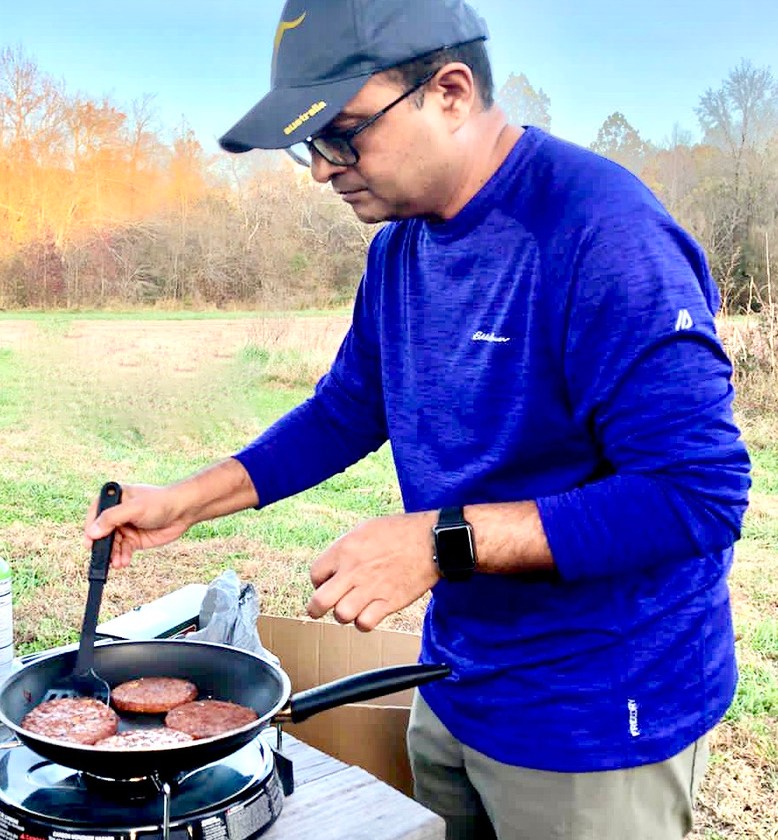
Veg Chapli Kebab
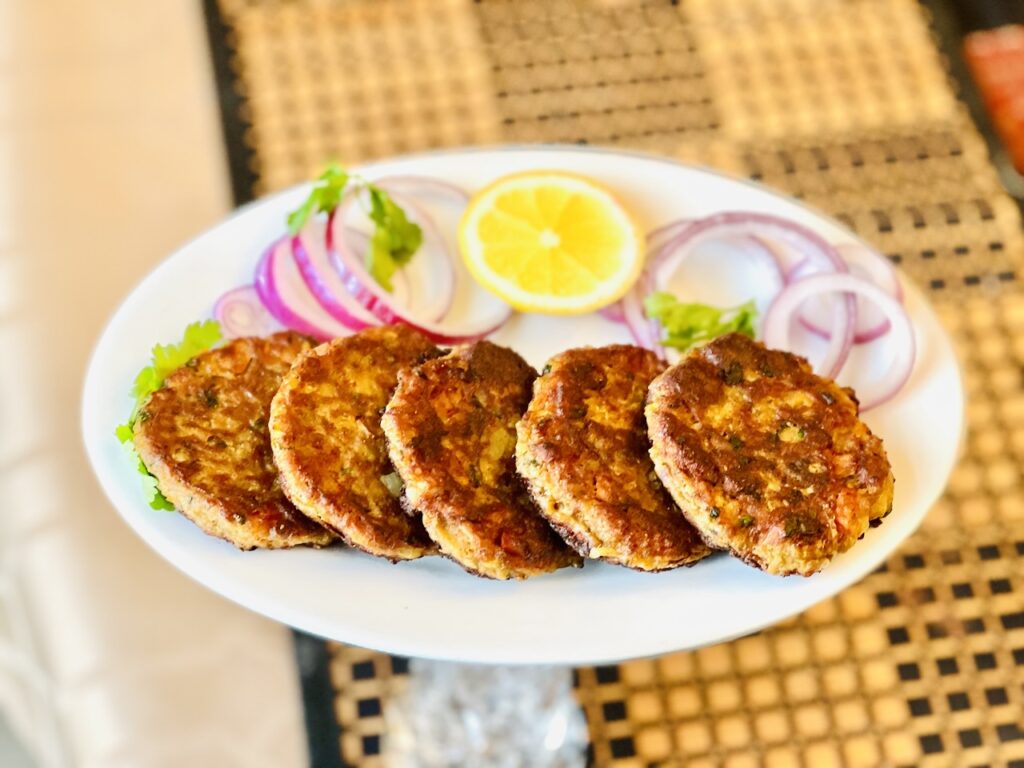
Veg Chapli Kebab (also called Kabob) is a vegetarian adaptation of the traditional street food from the Pashtun cuisine (Afghan & Peshawari) which is made with meat. I have replaced the minced meat with cauliflower, potatoes, and a combination of pea protein, wheat flour, and corn starch, to bring a texture that is very similar to meat-based Kebab. The rest of the ingredients are similar to the traditional style for Chapli kebab preparation.
The combination of pea protein (available in most groceries or you can grind peas to a fine powder), eggs, wheat flour, and corn starch helps bind the grated vegetables and also develops a soft texture. I have used a variety of spices and herbs which make the kebabs spicy and develop a range of flavors.
The Chapli kebabs can be shallow or deep fried in vegetable cooking oil over medium heat. Chapli kebabs can be served and garnished with parsley, chopped onions, and tomatoes, along with other accompaniments such as chutney, salad, and yogurt. The chapli kebab is best served while it is hot.
The Chapli kabab can be served with bread such as naan, rice dishes such as pulao, or used as a patty for burgers and sandwiches.
Description
Veg Chapli Kebab (also called Kabob) is a vegetarian adaptation of the traditional street food from the Pashtun cuisine (Afghan & Peshawari) which is made with meat. The key ingredients in this recipe are cauliflower, potatoes, and a combination of pea protein, wheat flour, and corn starch, to bring a texture that is very similar to meat-based Kebab. A unique fusion of flavors from Afghan and Indian cuisines.
Ingredients
- 1 cup Cauliflower (Boiled & grated)
- 1 cup Potato (Boiled & grated)
- 1 Large onion (Minced)
- 2 Indian green chilies
- 2 tsp Ginger-garlic paste
- 1/2 cup Cilantro- chopped
- 2 Tomatoes (Deseeded and grated)
- 2 tsp Lemon juice
- 2 tsp Cumin powder
- 3 tsp Kasoori methi - crushed
- 1 tsp Coriander powder
- 1 tsp Kashmiri chili powder
- 2 tsp Garam masala powder
- 1/2 tsp Black pepper powder
- 3/4 cup Pea protein or finely ground pea powder
- 3/4 cup Wheat flour
- 1 tbsp Corn starch
- 2 Large eggs
- 1/3 cup Thick yogurt / curd
- 2 tsp Baking powder
- 1.5 tsp Salt (adjust to taste)
- 1 cup Cooking oil
Vegetables
Spices
Flours
Other ingredients
Instructions
- 1 Prepare the Vegetables
- Cut a Cauliflower head into 2 pieces and boil them in water for 5 minutes
- Grate the cauliflower using a grater or mince it using a food processor
- Boil the Potato until it is semi-soft. Grate it using a grater.
- Grate the onions and tomato separately
- Chop finely the green chilies or grind them into a fine paste
- 2
Mix all ingredients- Take a large mixing bowl
- First mix yogurt and all the spice powders
- Then add all flours and make them well
- Then add all vegetables and herbs, eggs (beaten well), and other ingredients listed. Mix well to form a soft dough
- 3
Preparing the Kebabs( I used a shallow frying method but you may choose to deep fry. Shallow frying is a more healthy option )
- Take a thick bottom frying pan and add 1 Tablespoon oil
- Take ⅓ Cup of Kabab dough and press it into a round flat patty in the palm of your hands. If the dough is sticking to your hands, you can apply oil to the palm of your hands.
- The Kababs should be about ½ to ⅔ rd inch thick and about 2.5 inch in diameter.
- Place the Kababs in the frying pan when the oil is hot. Depending on the size of the frying pan, we can vary the number of Kababs that can be fried simultaneously.
- Just make sure that the pan is not cramped and it is easy to flip the kebabs
- Once you place the kebabs in the frying pan, let the kebabs cook for about 4-5 minutes on medium heat.
- The kebabs need enough time to cook as they are thick and also of higher density due to the flours added.
- After about 4-5 minutes, take a spatula and slowly flip each Kabab and let them fry on the other side for another 5 minutes.
- Add some more cooking oil
- A good way to tell if the Kababs are well cooked is to check the color - a golden brown color on both sides with some darker streaks of browning indicates the Kababs are well cooked.
- Do not flip too many times. Keep the heat at a medium level as it helps in uniform cooking. After you taste the first Kabab you can tell if the duration of cooking is right or not. Adjust the duration of frying accordingly.
- 4
Serving- Serve the Chapli Kababs while they are still warm
- You can serve them with naan bread or rice pilav
- The Chapli kebabs can also be served as an appetizer or side dish along with freshly cut onions, lemon and a variety of Chutneys for dipping
- The Chapli Kababs can also be eaten like a burger or sandwich - Coat each layer of burger buns with Indian mint chutney and Ketchup, place the Chapli kabab patty in the middle with a layer of grated lettuce, thinly cut onions, and tomatoes.
- 5
Step-By-Step Pictures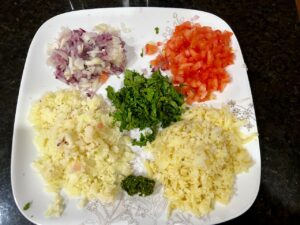
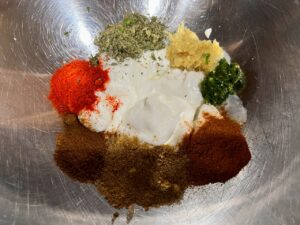
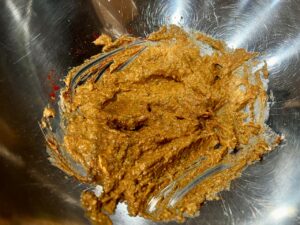
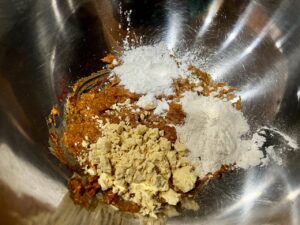
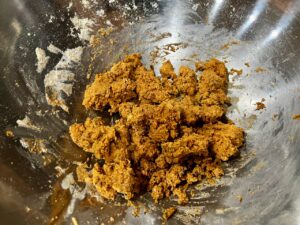
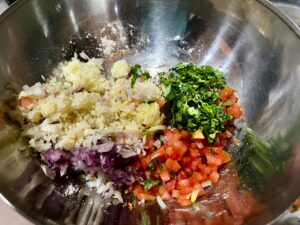
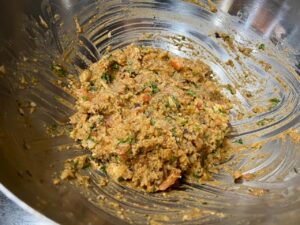
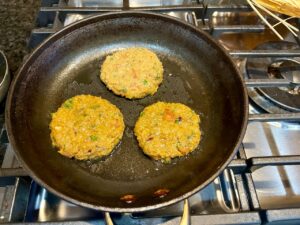
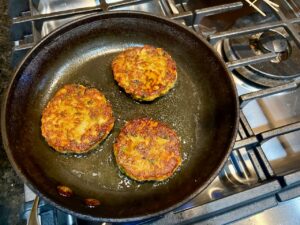
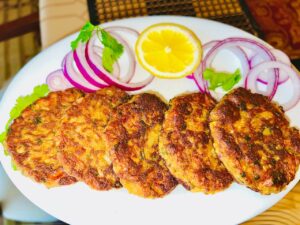 Notes
Notes- You can refrigerate the Kabab dough mixture for 2-3 days and bring it to room temperature before frying
- You may also freeze the prepared Veg Chapli Kebabs for upto a month - before you are ready to eat, thaw the Kebabs and bake them in an oven for about 15 minutes at 400F. You may also fry the Kebabs on a pan with a little spreading of cooking oil.
Chapli, Kabab, Kebab, Kabob, Pashtun, Afghan cuisine, Patty, Peshawari, pakistan, vegetarian, Indian, spicy, burger,
